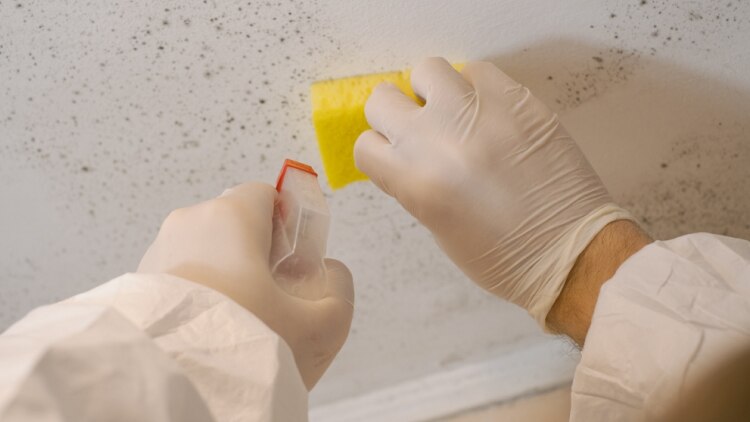

Is Your Home in Hong Kong Humid and Moldy? Cleaning Methods for Mold
Hong Kong has a subtropical climate, and especially during the transition from spring to summer, humidity can often exceed 80%, particularly during the "returning to southern weather" period, where water appears on walls and floors are damp. This long-term humid environment provides ideal conditions for mold growth. Once mold appears in the home, it not only affects visual aesthetics and the lifespan of furniture but can also lead to declining air quality, triggering respiratory allergies, asthma, and other health issues. Therefore, addressing mold problems is not just about cleanliness; it's vital for safeguarding family health.
Common Mold Locations and Causes
1. Walls and Ceilings
Humid air comes into contact with the wall surfaces, and coupled with insufficient sunlight and poor ventilation, mold spots can easily form, especially near windows or external walls.
2. Bathroom and Kitchen
These areas frequently use water, and if exhaust systems are insufficient, moisture can linger for extended periods, creating an ideal environment for mold growth.
3. Wardrobes and Storage Cabinets
Enclosed spaces lack air circulation, making it easy for moisture to accumulate. If clothing is not completely dry before being stored, it further exacerbates the formation of mold and musty odors.
4. Window Frames and Silicone Seals
Windows often produce condensation due to temperature differences between indoors and outdoors, with silicone seals being particularly prone to harboring mold, which is difficult to detect and clean.
Practical Mold Cleaning Methods
1. Bleach (1:99 Dilution)
Bleach is an effective disinfectant that can quickly remove mold stains and kill mold. Mix bleach with water in a 1:99 ratio, wear gloves and a mask, and ensure good ventilation. Spray on the mold spots and let it sit for about 10 minutes before wiping. Suitable for bathroom tiles, silicone seals, window frames, and other hard surfaces.
2. Alcohol (70% or higher)
Particularly effective against light mold spots on walls and wooden furniture. Use a spray bottle to evenly spray on the mold surface, let it sit for 5-10 minutes, then wipe with a dry cloth. Avoid using it near open flames and on plastic surfaces.
3. White Vinegar
White vinegar has natural acidity that can break down mold structures. Spray undiluted white vinegar directly on the mold spots, let it sit for 30 minutes, then scrub and rinse with clean water. Suitable for sensitive individuals or families who prefer not to use chemical cleaners.
4. Baking Soda
Has moisture-absorbing and deodorizing effects. Mix with water to form a paste and apply it to moldy areas. Let it sit for several hours before scrubbing off. Can also be sprinkled in wardrobes or shoe cabinets as a natural moisture absorber.
5. Professional Mold Removal Products
Brands like Polycell and HG offer specialized mold removers that are particularly effective against stubborn mold. Most products come with spray nozzles for convenience but should be used according to instructions to avoid overuse or damage to surfaces.
Daily Habits to Prevent Mold Growth
1. Control Indoor Humidity
It is recommended to use a dehumidifier to maintain indoor humidity below 50%. Particularly in kitchens, bathrooms, or rooms near external walls, regular dehumidifying is necessary. A hygrometer can also be used to monitor humidity changes.
2. Enhance Ventilation
Open windows for at least 30 minutes daily, especially when the weather is dry. Use exhaust fans in bathrooms and kitchens for 15-30 minutes after use to prevent moisture from lingering. Ceiling fans or air conditioning systems can also help promote air circulation.
3. Clothing and Storage Management
Ensure all clothing is completely dry before placing it in wardrobes. It is advised to use moisture absorbers, activated charcoal, or desiccants in wardrobes, changing them monthly. Regularly clean wardrobes and open doors for ventilation to prevent mold growth.
4. Renovation and Material Selection
Choose moisture-resistant paints (like anti-mold paint, waterproof primer), tiles, and breathable bricks during renovations. In humid areas (like bathrooms and kitchens), use silicone seals and select products with anti-mold formulas.
In Hong Kong’s high-humidity environment, mold issues cannot be solved just once. Besides cleaning methods, it is more important to establish good daily habits and humidity management awareness. Through regular dehumidifying, improved ventilation, and proper storage methods, mold can be effectively prevented from regrowing, keeping the home dry and healthy.

